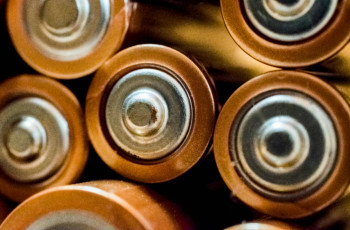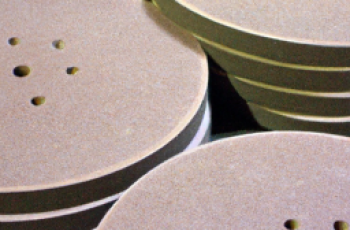Electric die grinders are versatile power tools that offer a range of benefits, but understanding how to effectively utilize their variable speed settings can greatly enhance their performance. By adjusting the speed settings, you can customize the tool’s operation to suit different materials and tasks, providing more control and precision. Whether you need high-speed cutting or low-speed polishing, grasping the concept of variable speed settings in electric die grinders opens up a world of possibilities for improving your efficiency and achieving professional-quality results.

What is an electric die grinder?
Definition of an electric die grinder
An electric die grinder is a handheld power tool that is commonly used for grinding, polishing, deburring, shaping, cutting, and engraving various materials. It is a versatile tool that operates using an electric motor, which rotates a spinning abrasive wheel or accessory. Electric die grinders are favored for their compact size, lightweight design, and easy maneuverability, making them ideal for precision work in small spaces.
Components of an electric die grinder
An electric die grinder typically consists of several key components. Firstly, there is the body or housing, which houses the motor. Attached to the body is a handle or grip, providing stability and control during operation. The motor powers the grinding wheel or accessory, which is secured to the spindle. Additionally, electric die grinders often have a speed control mechanism, allowing users to adjust the rotation speed of the abrasive wheel. Some models may also feature a safety lock-off switch to prevent accidental operation.
Common uses for an electric die grinder
Electric die grinders have a wide range of applications across various industries and DIY projects. They are commonly used for tasks such as grinding and polishing metal surfaces, removing burrs or sharp edges, shaping metal, cutting through various materials like plastics or wood, and engraving designs or details. From automotive repair and metal fabrication to woodworking and jewelry making, an electric die grinder is a valuable tool in any workshop or professional setting.
What are variable speed settings?
Definition of variable speed settings
Variable speed settings refer to the ability to adjust the rotation speed of an electric die grinder’s motor and thus the velocity at which the grinding wheel or accessory rotates. Unlike fixed-speed grinders that only operate at one speed, variable speed settings allow users to customize the tool’s performance based on the specific task, material, or desired outcome.
Why variable speed settings are important in electric die grinders
Variable speed settings are crucial in electric die grinders for several reasons. Different materials and tasks require varying cutting or grinding speeds for optimal results. For example, cutting through metal may require a higher speed setting, while polishing delicate materials like wood or plastic requires a lower speed setting to avoid damaging the workpiece. Variable speed settings provide flexibility and control, enabling users to achieve the desired outcome with precision and efficiency.
Advantages of variable speed settings
Increased versatility and control
One of the significant advantages of variable speed settings in electric die grinders is the increased versatility and control they offer. By being able to adjust the speed, you can adapt the tool to various materials and operations. Whether you need a low speed for delicate tasks or a higher speed for heavy-duty cutting, variable speed settings allow you to tackle a wide range of projects with a single tool.
Enhanced precision and accuracy
Variable speed settings also contribute to enhanced precision and accuracy in your work. Different materials and projects require different levels of finesse, and being able to control the speed allows you to achieve the desired result. For intricate engraving or detailed shaping, a slower speed setting provides better control and reduces the risk of damaging the workpiece. Meanwhile, a higher speed setting allows for efficient material removal during cutting or grinding tasks.
Reduced risk of damage to workpieces and tools
With variable speed settings, you can reduce the risk of damage to both your workpieces and the grinder itself. When using a single fixed speed, there is a higher chance of the tool being too aggressive for a delicate material or too slow to effectively cut through a tougher material. By adjusting the speed to match the material and task at hand, you minimize the risk of causing damage, such as burning wood or overheating metal.
Improved safety and comfort
Variable speed settings also contribute to improved safety and comfort during operation. When using a grinder at excessively high speeds, it can become difficult to control, increasing the risk of accidents and injury. By utilizing lower speed settings for more delicate tasks, you have better control over the tool, reducing the chance of slips or mishaps. Additionally, lower speeds can help mitigate excessive vibration, making the tool more comfortable to use for extended periods.
How do variable speed settings work?
Types of speed control mechanisms in electric die grinders
Electric die grinders employ different mechanisms for controlling their speed. One common type is a speed control dial, which allows users to adjust the speed incrementally using a rotating dial or knob. This type of speed control offers versatility and precision in selecting the desired speed setting. Another type is a switch-based speed control, where users can select from preset speed options using a toggle or slide switch. This mechanism provides convenience when needing to switch between different speed settings quickly.
The role of a speed control dial or switch
The speed control dial or switch in an electric die grinder acts as the interface between the user and the motor’s speed. It allows users to adjust the speed to match the specific task or material being worked on. Whether it’s a dial that can be turned or a switch that can be toggled, the speed control mechanism gives users the flexibility to choose the appropriate speed setting for optimal performance.
The relationship between speed and power
It’s important to understand that the speed control in an electric die grinder affects not only the speed of rotation but also the power output of the motor. As the speed is decreased, the grinder’s torque increases, providing more power for tougher tasks. On the other hand, as the speed is increased, the torque decreases, making it easier to control the grinder for precision work.

Factors to consider when choosing variable speed settings
Material being worked on
When selecting the appropriate variable speed setting, the material being worked on is a crucial factor to consider. Softer materials typically require slower speeds to prevent excessive removal or damage, while harder materials may benefit from higher speeds for more efficient cutting or grinding.
Type of operation
The type of operation also plays a role in determining the ideal variable speed setting. For tasks that require more finesse or precision, such as engraving or polishing, lower speed settings are typically preferred. However, operations like cutting or shaping may require higher speeds to achieve desired results efficiently.
Desired finish
The desired finish of the workpiece is another consideration when choosing variable speed settings. Certain finishes, such as a smooth, polished surface, are best achieved with lower speeds that allow for more control and precision. Conversely, rougher finishes or material removal may require higher speeds to accomplish the desired outcome.
Bit or accessory size
The size of the bit or accessory being used in the electric die grinder also influences the choice of variable speed setting. Larger accessories generally require higher speeds to maintain effective cutting or grinding performance, while smaller accessories may be better suited for lower speeds to prevent damage or overheating.
Common applications of different speed settings
Low speed settings – Grinding and polishing
Low speed settings in electric die grinders are commonly used for tasks that require grinding and polishing. With slower speeds, you have better control over the tool, allowing for finer and more delicate work. This speed setting is ideal for achieving smooth finishes on materials like wood, plastic, or soft metals, as well as for removing smaller imperfections or burrs.
Medium speed settings – Deburring and shaping
Medium speed settings are often employed for deburring and shaping tasks. These settings provide a balance between control and efficiency, allowing for effective material removal without sacrificing precision. Whether you’re smoothing rough edges or shaping a workpiece, medium speed settings offer versatility for a range of operations.
High speed settings – Cutting and engraving
High speed settings are primarily used for cutting and engraving tasks that require faster and more aggressive material removal. These settings are ideal for cutting through tough materials like metal or stone, as well as for engraving designs or details where precision and speed are crucial.

Tips for effectively using variable speed settings
Start with a lower speed and increase gradually
When using variable speed settings, it’s generally recommended to start with a lower speed and then gradually increase as needed. This allows you to familiarize yourself with the tool’s behavior and ensure that you have sufficient control and stability before advancing to higher speeds. Starting at slower speeds also minimizes the risk of causing unintended damage to the workpiece.
Match the speed to the task
Always match the speed of your electric die grinder to the specific task at hand. Consider the material, operation, desired finish, and accessory size to determine the appropriate speed setting. Adapting the speed to each task ensures optimal performance, improves efficiency, and reduces the risk of accidents or damage to the workpiece.
Pay attention to vibration and heat
While using variable speed settings, it’s important to pay attention to any excessive vibration or heat generated by the grinder. Excessive vibration may indicate the need to adjust the speed or the need for maintenance, while excessive heat can be a sign of overworking the tool. Monitoring these factors ensures safe and efficient operation, prolongs the life of your grinder, and helps avoid potential issues.
Regularly clean and maintain your grinder
To ensure the longevity and performance of your electric die grinder, regular cleaning and maintenance are essential. Follow the manufacturer’s guidelines for cleaning and lubrication to keep the tool in optimal condition. Additionally, periodically checking the speed control mechanism for any signs of wear or malfunction is important to maintain accurate and reliable speed settings.
Potential challenges and troubleshooting with variable speed settings
Inconsistent speed control
One potential challenge with variable speed settings is inconsistent speed control. This can occur due to factors like worn-out speed control mechanisms, electrical issues, or improper usage. To troubleshoot inconsistent speed control, it is recommended to check for any obstructions or debris that may be affecting the tool’s functionality, ensure a secure connection between the power source and the grinder, and consider professional repair or replacement if issues persist.
Overheating or motor failure
Another challenge that may arise with variable speed settings is overheating or motor failure. Excessive heat can be a result of running the grinder at too high a speed for a prolonged period, overworking the motor, or inadequate airflow around the tool. To prevent overheating or motor failure, always utilize the appropriate speed setting for the task, allow the grinder to cool down as needed, and maintain proper ventilation when operating the tool.
Excessive noise or vibration
Excessive noise or vibration can occur when using an electric die grinder with variable speed settings. This can be attributed to a variety of factors, including improper maintenance, worn-out accessories, or misalignment of the grinding wheel. To address excessive noise or vibration, perform regular maintenance, ensure accessories are properly aligned and secured, and replace any worn-out or damaged components as needed.
Safety precautions when using variable speed settings
Wear appropriate personal protective equipment
When using an electric die grinder with variable speed settings, it is crucial to wear appropriate personal protective equipment (PPE). This includes safety glasses or goggles to protect the eyes from flying debris and sparks, as well as gloves to provide hand protection. Depending on the specific task and work environment, additional PPE such as hearing protection and respiratory masks may also be necessary.
Secure your workpiece
Always ensure that your workpiece is securely held in place before operating the grinder. This prevents the workpiece from moving or shifting during use, reducing the risk of accidents or injuries. Utilize clamps, vices, or other appropriate methods to firmly secure the workpiece, providing stability and control throughout the operation.
Be mindful of sparks and debris
Electric die grinders generate sparks and debris during operation, which can pose a fire hazard or cause injury. To mitigate these risks, always be mindful of the direction of sparks and use protective barriers or fire-resistant surfaces whenever necessary. Additionally, take precautions to direct sparks away from flammable materials and ensure that your work area is clear of any potential hazards.
Avoid using excessive force
Using excessive force when operating an electric die grinder can lead to loss of control and potential accidents. Let the grinder’s speed and the sharpness of the accessory do the work for you, applying moderate and steady pressure. Avoid exerting unnecessary force, as it not only puts you at risk but can also strain the motor and decrease the tool’s lifespan.
Conclusion
Understanding variable speed settings in electric die grinders is crucial for achieving optimal results in a wide range of tasks and materials. The ability to adjust the speed allows for enhanced versatility, control, precision, and safety. By selecting the appropriate speed setting based on factors such as the material, desired finish, and type of operation, you can maximize the efficiency and effectiveness of your electric die grinder. Remember to always prioritize safety by wearing appropriate PPE, securing your workpiece, and using the tool responsibly. With a solid understanding of variable speed settings, you can confidently tackle various projects with your electric die grinder and achieve impressive results.



